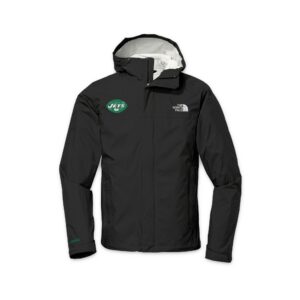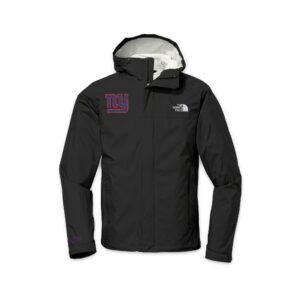New Jersey, with its diverse landscapes ranging from coastal wetlands and forests to meadows and urban parks, is a birdwatcher’s paradise. The state’s strategic location along the Atlantic Flyway makes it a crucial stopover for migratory birds, offering birders endless opportunities to observe a wide variety of species throughout the year. Whether you’re a seasoned ornithologist or a casual nature lover, New Jersey’s birding scene promises an exhilarating experience.
Prime Birding Spots in New Jersey
Cape May: Cape May is renowned as one of the best birding locations in North America. Every fall, thousands of hawks, warblers, and shorebirds pass through this migratory hotspot. The Cape May Bird Observatory offers guided walks and programs that cater to both novice and experienced birders.
Great Swamp National Wildlife Refuge: Located in Morris County, this 7,800-acre refuge provides a vital habitat for over 244 bird species. With its mix of wetlands, swamps, and upland forest, the Great Swamp is perfect for spotting waterfowl, raptors, and songbirds.
Sandy Hook: Part of the Gateway National Recreation Area, Sandy Hook offers a unique combination of ocean, bay, and maritime forest habitats. This variety attracts a plethora of bird species, especially during migration seasons.
Delaware Water Gap: Stretching along the Delaware River, this national recreation area features extensive woodlands and riverine habitats. Birders can expect to see species like bald eagles, peregrine falcons, and a variety of warblers.
Weekly Rare Bird Sighting Report
Our weekly rare bird sighting report is eagerly anticipated by the birding community. It highlights the most unusual and exciting sightings across the state, offering birders the chance to witness rare avian visitors.
Week of June 1-7, 2024:
Black-capped Petrel: A rare visitor, typically found far offshore, was sighted near Sandy Hook. This pelagic species is a thrilling find for coastal birders.
Fork-tailed Flycatcher: Spotted in Cape May, this striking bird, with its long, scissor-like tail, is a rare vagrant from South America. Its presence caused quite a stir among local birders.
Painted Bunting: A male Painted Bunting, known for its vibrant blue, green, and red plumage, was seen at the Great Swamp National Wildlife Refuge. This sighting drew birders from far and wide, hoping to catch a glimpse of this colorful beauty.
Bar-tailed Godwit: This Eurasian shorebird, rarely seen in North America, was observed at Brigantine (Forsythe) National Wildlife Refuge. The godwit’s distinctive long bill and barred tail made it a standout sighting for shorebird enthusiasts.
Kirtland’s Warbler: One of North America’s rarest songbirds, the Kirtland’s Warbler was spotted in the Pine Barrens. This endangered species is a highlight for any birder lucky enough to encounter it.
RARE BIRD SPOTTINGS IN NEW JERSEY FROM THE LAST FIVE DAYS:
Black-bellied Whistling-Duck (1 Bergen)
Northern Shoveler (4 Bergen)
American Black Duck (1 Burlington)
Northern Pintail (2 Bergen)
Common Eider (1 Ocean)
Long-tailed Duck (1 Monmouth)
Red-breasted Merganser (3 Bergen, 1 Ocean)
Sandhill Crane (1 Essex)
American Avocet (7 Cape May)
Semipalmated Plover (1 Mercer)
Stilt Sandpiper (1 Cape May)
White-rumped Sandpiper (2 Middlesex)
Western Sandpiper (2 Atlantic)
Bonaparte's Gull (1 Camden)
Arctic Tern (1 Ocean)
Fea's Petrel (1 Ocean)
Black-capped Petrel (Dark-faced) (1 Ocean)
Brown Booby (13 Hunterdon)
Least Bittern (5 Somerset)
Little Blue Heron (1 Bergen)
Sharp-shinned Hawk (1 Essex)
Red-headed Woodpecker (1 Essex)
Alder Flycatcher (1 Mercer, 1 Morris)
Brown-headed Nuthatch (4 Cape May)
Cedar Waxwing (1 Ocean)
Cerulean Warbler (3 Passaic)
Blackburnian Warbler (1 Ocean)
Black-throated Green Warbler (1 Cape May)
Summer Tanager (1 Burlington, 1 Essex)
Blue Grosbeak (1 Warren)
Common Eider (1 Monmouth)
Long-tailed Duck (1 Monmouth)
Hooded Merganser (1 Hudson)
Chuck-will's-widow (2 Burlington)
Virginia Rail (2 Mercer)
Common Gallinule (1 Morris)
American Avocet (15 Cape May)
Stilt Sandpiper (3 Cape May)
Brown Booby (11 Hunterdon)
Least Bittern (1 Burlington, 5 Somerset)
Little Blue Heron (1 Bergen)
American Goshawk (1 Gloucester)
Red-headed Woodpecker (1 Burlington, 1 Hunterdon)
Pileated Woodpecker (1 Cape May)
Alder Flycatcher (1 Morris)
Yellow-throated Vireo (1 Burlington)
Red-breasted Nuthatch (1 Morris)
Swainson's Thrush (1 Cape May)
Hermit Thrush (1 Bergen)
Pine Siskin (1 Bergen)
Dark-eyed Junco (1 Gloucester)
White-throated Sparrow (2 Warren)
Bobolink (1 Bergen)
Tennessee Warbler (1 Cape May)
Nashville Warbler (1 Monmouth)
Kentucky Warbler (1 Morris)
Cerulean Warbler (3 Passaic)
Northern Parula (1 Hudson, 1 Monmouth)
Blackpoll Warbler (3 Atlantic)
Dickcissel (1 Gloucester)
Black-bellied Whistling-Duck (1 Bergen)
Northern Pintail (1 Hudson)
Common Eider (1 Monmouth)
Long-tailed Duck (1 Monmouth)
Red-breasted Merganser (1 Bergen)
Chuck-will's-widow (1 Burlington)
King Rail (1 Atlantic)
American Avocet (15 Cape May)
Red-throated Loon (1 Monmouth)
Common Loon (2 Gloucester)
Fea's Petrel (27 Ocean)
Black-capped Petrel (Dark-faced) (27 Ocean)
Least Bittern (1 Morris, 1 Somerset)
Snowy Egret (2 Burlington)
Yellow-bellied Sapsucker (1 Morris)
Red-headed Woodpecker (3 Burlington)
Pileated Woodpecker (1 Atlantic)
Merlin (4 Sussex)
Acadian Flycatcher (1 Mercer)
Alder Flycatcher (1 Morris)
Veery (1 Burlington)
Hermit Thrush (1 Bergen)
Cedar Waxwing (25 Ocean)
Tennessee Warbler (2 Cape May)
Kentucky Warbler (2 Morris)
Magnolia Warbler (1 Gloucester)
Blackburnian Warbler (26 Ocean)
Yellow-rumped Warbler (1 Mercer)
Yellow-throated Warbler (1 Burlington)
Canada Warbler (1 Union)
Summer Tanager (1 Burlington)
Rose-breasted Grosbeak (1 Ocean)
Blue Grosbeak (1 Essex)
Black-bellied Whistling-Duck (2 Bergen)
Red-breasted Merganser (1 Gloucester)
Northern Bobwhite (1 Hunterdon)
Virginia Rail (1 Mercer)
American Oystercatcher (1 Union)
Semipalmated Plover (1 Bergen)
Upland Sandpiper (1 Monmouth)
Semipalmated Sandpiper (1 Burlington)
Bonaparte's Gull (1 Ocean)
Black Skimmer (1 Burlington)
Fea's Petrel (2 Ocean)
Black-capped Petrel (Dark-faced) (2 Ocean)
Anhinga (6 Cape May)
Red-headed Woodpecker (1 Burlington)
Acadian Flycatcher (1 Mercer)
Alder Flycatcher (1 Ocean)
Blue-headed Vireo (1 Morris)
Black-capped Chickadee (1 Monmouth)
Brown Creeper (1 Burlington)
Cedar Waxwing (2 Ocean)
White-throated Sparrow (1 Cape May, 1 Warren)
Savannah Sparrow (1 Monmouth)
Boat-tailed Grackle (1 Burlington)
Nashville Warbler (1 Monmouth)
Cerulean Warbler (1 Passaic)
Blackburnian Warbler (2 Ocean)
Chestnut-sided Warbler (1 Essex, 2 Monmouth)
Black-throated Green Warbler (2 Cape May, 1 Somerset)
Northern Shoveler (2 Bergen)
Northern Pintail (2 Bergen)
Bufflehead (1 Gloucester)
Red-breasted Merganser (3 Bergen)
Northern Bobwhite (1 Atlantic)
Virginia Rail (1 Mercer, 1 Union)
Virginia Rail (Virginia) (1 Mercer)
American Oystercatcher (1 Union)
Semipalmated Plover (1 Gloucester)
Solitary Sandpiper (1 Cape May)
Stilt Sandpiper (1 Atlantic)
Black-legged Kittiwake (2 Cape May)
Bonaparte's Gull (1 Ocean)
Red-throated Loon (3 Monmouth)
Anhinga (6 Cape May)
Glossy Ibis (1 Gloucester)
Sharp-shinned Hawk (1 Morris)
Yellow-bellied Sapsucker (2 Morris)
Red-headed Woodpecker (2 Hunterdon)
Yellow-bellied Flycatcher (1 Monmouth)
Alder Flycatcher (4 Monmouth)
Least Flycatcher (1 Somerset)
Yellow-throated Vireo (1 Burlington)
Black-capped Chickadee (1 Monmouth)
White-throated Sparrow (1 Ocean, 1 Warren)
Prothonotary Warbler (2 Mercer)
Kentucky Warbler (2 Morris)
Cerulean Warbler (1 Passaic)
Northern Parula (1 Burlington, 2 Monmouth)
Magnolia Warbler (2 Mercer, 1 Ocean)
Bay-breasted Warbler (1 Passaic, 1 Somerset)
Blackburnian Warbler (1 Monmouth)
Chestnut-sided Warbler (2 Monmouth)
Black-throated Green Warbler (1 Cape May)
Wilson's Warbler (1 Somerset, 1 Sussex)
How to Get Involved
Birding in New Jersey is not just about observing; it’s also about community and conservation. Here are a few ways to get involved:
Join Local Birding Clubs: Organizations like the New Jersey Audubon Society offer field trips, workshops, and volunteer opportunities. Joining a club is a great way to learn from experienced birders and contribute to local conservation efforts.
Participate in Citizen Science: Engage in projects like the Christmas Bird Count or the Great Backyard Bird Count. These initiatives help gather valuable data on bird populations and migration patterns.
Visit Birding Festivals: Events like the Cape May Spring Festival and the New Jersey Meadowlands Festival of Birding offer lectures, guided tours, and the chance to connect with fellow birders.
Birding in New Jersey is a vibrant and rewarding pursuit, enriched by the state’s diverse habitats and strategic location on the Atlantic Flyway. The thrill of spotting rare birds, combined with the camaraderie of the birding community, makes it a deeply fulfilling hobby. Our weekly rare bird sighting report continues to excite and engage birders, highlighting the unique and unexpected avian visitors that grace the Garden State. Whether you’re an experienced birder or a newcomer, New Jersey’s rich avian life offers endless opportunities for discovery and wonder.











